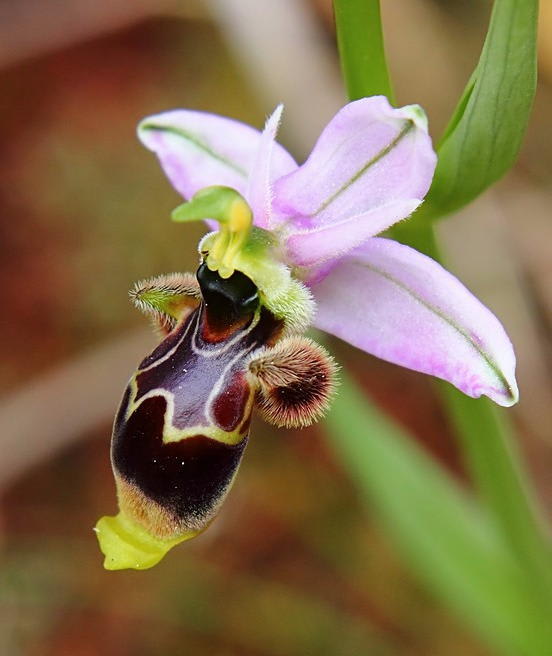
🌿 Morphology
🌞 Growing conditions
🌍 Origin and family
🌾 Uses
Warning: Despite the care taken in writing this sheet, it is essential to cross-reference sources before using or consuming any plant. When in doubt, consult a qualified professional
Permaculture uses
While not directly used in permaculture gardens for food or medicine due to its conservation status and specialized habitat, the Woodcock Orchid can be an indicator species. Its presence suggests a healthy, biodiverse ecosystem suitable for supporting other beneficial plants and wildlife. It has no known edible or medicinal uses.
Permapeople description
Ophrys scolopax, known as the Woodcock Orchid, is a species of orchid found in Europe and the Mediterranean region. Its flower resembles a woodcock, hence the name.
Botanical description
Ophrys scolopax is a perennial herbaceous plant in the orchid family (Orchidaceae). It typically grows to a height of 15-60 cm. The plant features a basal rosette of 3-6 ovate to lanceolate leaves. The inflorescence is a spike bearing 2-12 flowers. The sepals are green to pinkish, while the petals are shorter and often brownish. The labellum is the most prominent part of the flower, resembling a woodcock in flight, hence the common name. It is typically brown to reddish-brown with a complex pattern of markings. This orchid relies on sexual deception, mimicking female insects to attract male pollinators. The seed pods are small and contain many tiny seeds.
Companion planting
The concept of companion planting is not directly applicable to Ophrys scolopax due to its specialized ecological requirements and protected status. It thrives in specific calcareous grassland habitats and its survival depends more on the presence of suitable mycorrhizal fungi and pollinators than on interactions with specific plant companions.
Propagation methods
Propagation is primarily through seed. However, germination is notoriously difficult in cultivation, as the seeds require specific symbiotic mycorrhizal fungi to establish successfully. In-vitro propagation techniques are sometimes employed for conservation purposes. Division or cuttings are not applicable to this species.
History and traditions
Historically, orchids of the Ophrys genus have held some cultural significance due to their unique appearance, sometimes being associated with folklore or used in traditional medicine, though less frequently than other plant families. Specific to Ophrys scolopax, records of widespread traditional use are limited, with its primary value residing in its ecological and botanical interest.
Usage calendar
Flowering occurs primarily from April to June. Seed dispersal follows later in the summer. Dormancy occurs during the winter months. Planting and transplanting are not typically performed due to the difficulty of cultivating this species.
